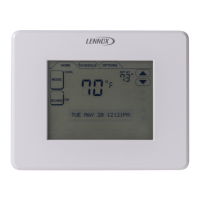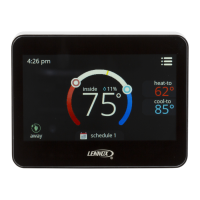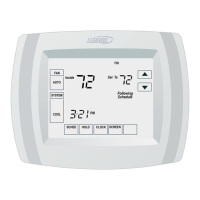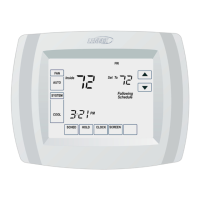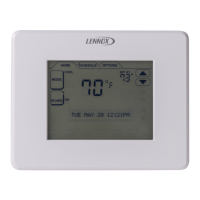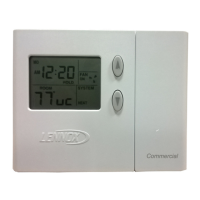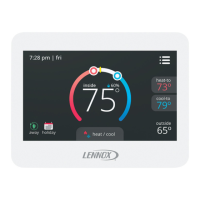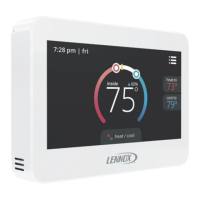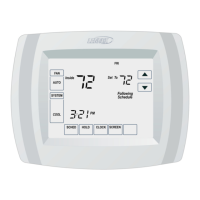8
Wiring Thermostat
Below are the terminal designations and a general
description of their purpose.
1. Connect wiring between thermostat, indoor,
and outdoor units. Connect external sensors
if applicable.
2. Connect internal and external sensors if
applicable. See information starting on page
9 for sensor wiring and conguring sensor
settings under the Installer Settings menu.
NOTE: Wire run should not exceed 300 feet
(100m).
3. Seal the hole in the wall with a suitable material
to prevent drafts from entering the thermostat
case.
4. Congure thermostat and equipment for
system type, program the thermostat, and test
system.
Terminal Designations
Ti - Remote indoor temperature sensor
Tc - Sensor common terminal
To - Outdoor or discharge air temperature sensor
Ec - Economizer/Time-of-Day (TOD) output-
powered via R terminal.
D - Dehumidication relay
W2 - Second-stage heating (non-heat pump) or
fourth-stage (heat pump)
Y2 - Second-stage heating or cooling
O/B/Y3 - Heat/Cool active reversing valve or third-
stage cooling
F - Economizer or other fault detection
C - Common 24VAC
G - Fan relay
W1 - First-stage heating (non-heat pump or emer-
gency heat) or third-stage heating (heat pump)
Y1 - Compressor output
R - 24VAC power
IMPORTANT!
In all applications, the commercial version of
the CS7500 thermostat can only be used if the
following installation criteria is met:
• Installation uses 18 GAUGE thermostat wire
or larger
• Thermostat wire run length DOES NOT
EXCEED 300’ (91m)
• Load from any thermostat connection is
1AMP or LESS
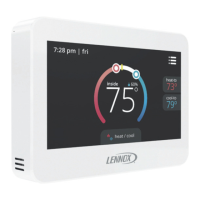
